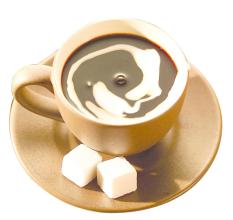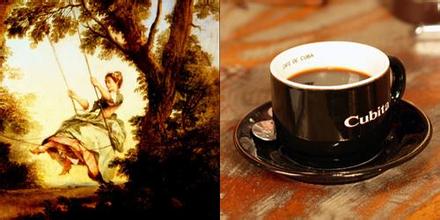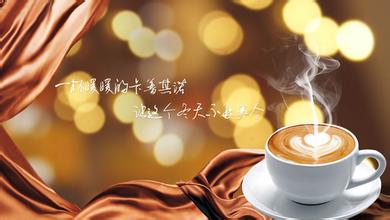Description of proportion and Flavor of Golden Manning Powder and Water introduction of varieties produced by taste treatment
Description of proportion and Flavor of Golden Manning Powder and Water introduction of varieties produced by taste treatment
First, the proportion, the ratio of powder and water selected by the bean uncle coffee roaster is 1:16, if you like the SCAA standard, you can change it to 1:18, this change will reduce the concentration of the coffee. That is, if 500ml water is injected into the kettle, the amount of coffee beans used is 32 grams or 28 grams.
Second, grinding, we grind coffee beans to very coarse granulated sugar particles, so the choice of grinding degree is because the time of soaking and extraction in the pressure kettle is longer, if the grinding is finer, it is bound to reduce the time of soaking and extraction, otherwise the solid soluble substances in coffee powder will be extracted too much, which we call over-extraction. To master the gouache ratio, you only need an electronic scale, but you don't need much practice. Here, we recommend the use of electronic scales with a minimum unit of 0.1 grams. Through the electronic scale, we can easily grasp the weight of the coffee powder poured into the handle, as well as the total weight of the final coffee, and can ensure that this ratio is permanent and constant.
The traditional method of making espresso (Ristretto) uses a water / flour ratio of 1:1 (i.e. 18 grams of coffee powder is used to make 18 grams of coffee) or 1:2 (i.e. 18 grams of coffee powder is used to make 36 grams of coffee), while a regular espresso uses a water / powder ratio of 1:2 (i.e., "Normale"). Once the water-powder ratio reaches 1:3 or 1:4, it is called "Lungo".
To master the gouache ratio, you can use a constant amount of coffee powder (for example, 18 grams) in the exercise, try to match different total coffee weight, and then compare the differences in taste, purity and mellowness. You need to decide the final gouache ratio according to your personal preference. Only through constant practice and exploration can you make an espresso that really suits you.
For example, if you walk into the Vivace Espresso coffee shop in Seattle, USA, you usually get a cup of espresso with a gouache ratio of between 1:1 and 1. 5. The coffee shop's founder, David Schomer, was a pioneer in the Italian espresso industry at the time, bringing the coffee to the northwestern United States for the first time. Italian espresso is extremely strong and thick, but lacks purity and dryness. Extremely low gouache ratio, coupled with deep-roasted, low-altitude grown coffee beans, the resulting coffee chocolate and caramel flavor is very strong. When Xiao Mo first introduced this kind of coffee to the United States, Americans still drank coffee with milk. This very strong espresso brings a new coffee experience to the local people.
As light-roasted, high-altitude coffee has become more popular in the past few years, the proportion of water popular on the market has also changed. Today, coffee shops in the United States, Europe and Australia are accustomed to using the gouache ratio of "Normale" espresso (1purl 1.5 or 1:2). As more coffee shops use individual coffee to make espresso, there is also a higher demand for gouache ratio. Increasing the ratio of gouache to flour can improve the purity and dryness of coffee and make coffee beans lightly roasted and planted at high altitude easier to extract.

Important Notice :
前街咖啡 FrontStreet Coffee has moved to new addredd:
FrontStreet Coffee Address: 315,Donghua East Road,GuangZhou
Tel:020 38364473
- Prev

Introduction to the story characteristics of Ethiopian boutique coffee beans
The highest grades of Ethiopian coffee are grade 2 and 3 (Yirgacheffe, Sidamo), while sun-processed coffee in eastern Ethiopia is mostly grade 4 or grade 5 (G4, G5). In many cases, the coffee label of level 4
- Next

Indonesia Sumendana GAYO Mantenin G1-the difference between Mantenin and Blue Mountain
Indonesia Sumatana GAYO Mantenin G1-the difference between Mantenin and Blue Mountain according to Sumatra, during the Japanese occupation of Sumatra during World War II, a Japanese soldier drank mellow coffee in a cafe and asked the boss curiously: what kind of coffee is this? The boss mistakenly thought that the Japanese soldier was asking: where are you from? So the boss replied: Mandaining.
Related
- Detailed explanation of Jadeite planting Land in Panamanian Jadeite Manor introduction to the grading system of Jadeite competitive bidding, Red bid, Green bid and Rose Summer
- Story of Coffee planting in Brenka region of Costa Rica Stonehenge Manor anaerobic heavy honey treatment of flavor mouth
- What's on the barrel of Blue Mountain Coffee beans?
- Can American coffee also pull flowers? How to use hot American style to pull out a good-looking pattern?
- Can you make a cold extract with coffee beans? What is the right proportion for cold-extracted coffee formula?
- Indonesian PWN Gold Mandrine Coffee Origin Features Flavor How to Chong? Mandolin coffee is American.
- A brief introduction to the flavor characteristics of Brazilian yellow bourbon coffee beans
- What is the effect of different water quality on the flavor of cold-extracted coffee? What kind of water is best for brewing coffee?
- Why do you think of Rose Summer whenever you mention Panamanian coffee?
- Introduction to the characteristics of authentic blue mountain coffee bean producing areas? What is the CIB Coffee Authority in Jamaica?

